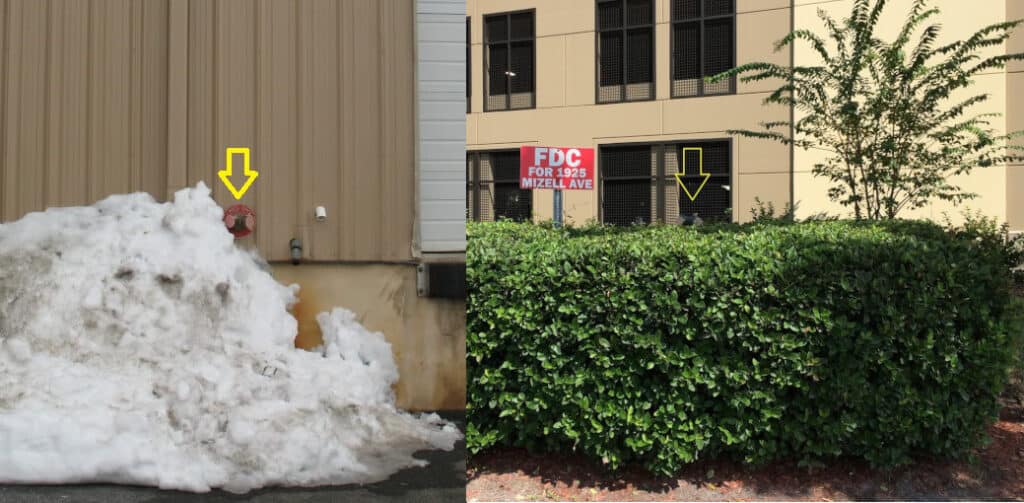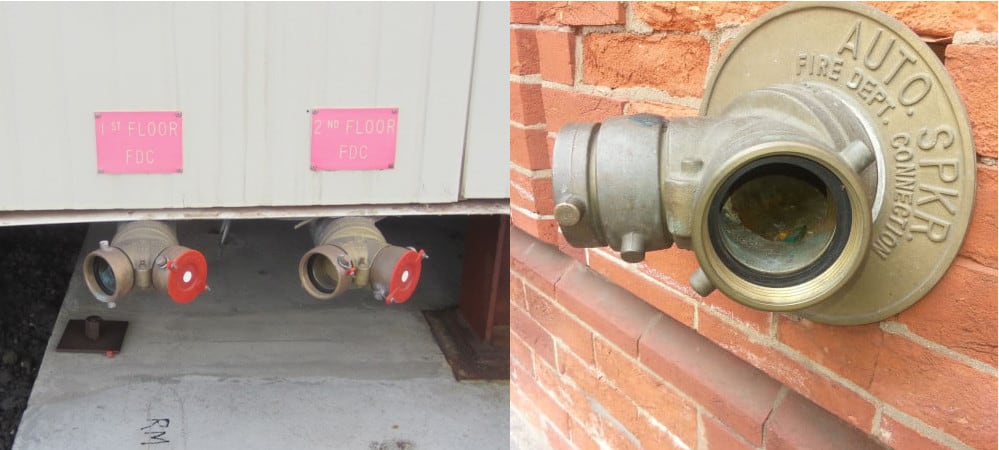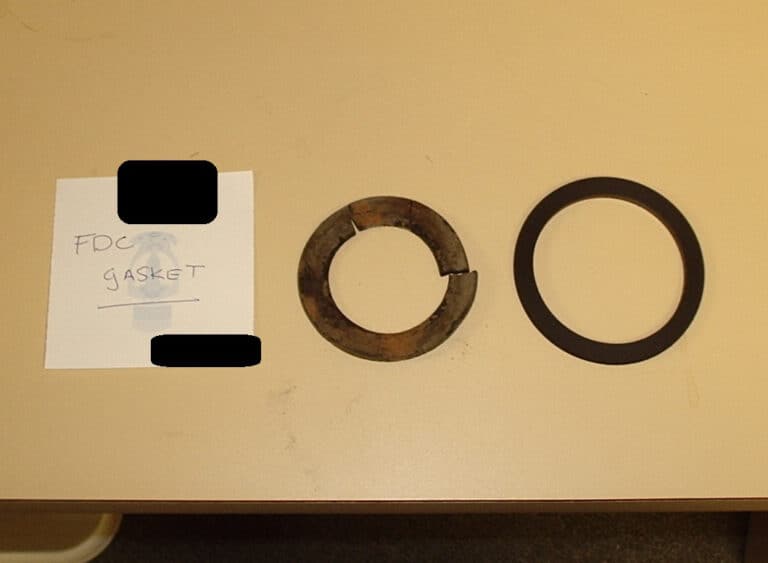[et_pb_section fb_built=”1″ module_id=”header-stickbar” module_class=”et_smooth_scroll setHeight” _builder_version=”4.19.5″ _module_preset=”default” background_enable_color=”off” custom_padding=”0px||0px||true|true” sticky_position=”top” motion_trigger_start=”top” custom_css_main_element=”overflow: visible;||background: #fff !important;” global_colors_info=”{}”][et_pb_row column_structure=”3_5,2_5″ use_custom_gutter=”on” gutter_width=”2″ module_id=”header-stickbar-row” _builder_version=”4.19.5″ _module_preset=”default” background_color=”RGBA(255,255,255,0)” width=”100%” max_width=”none” custom_padding=”||||true|true” custom_css_main_element=”overflow: visible;||” global_colors_info=”{}”][et_pb_column type=”3_5″ _builder_version=”4.19.5″ _module_preset=”default” global_colors_info=”{}”][et_pb_text _builder_version=”4.19.5″ _module_preset=”default” header_2_font=”|800|||||||” z_index=”1″ scroll_fade_enable=”on” scroll_fade=”65|80|80|100|0%|0%|100%” header_2_font_size_tablet=”” header_2_font_size_phone=”” header_2_font_size_last_edited=”on|desktop” global_colors_info=”{}”]
Fire Department Connections: A Complete Guide
[/et_pb_text][/et_pb_column][et_pb_column type=”2_5″ _builder_version=”4.19.5″ _module_preset=”default” global_colors_info=”{}”][et_pb_toggle title=”Choose a Topic” open_toggle_background_color=”#FFFFFF” closed_toggle_background_color=”#FFFFFF” module_class=”closeOnScroll” _builder_version=”4.19.5″ _module_preset=”default” body_link_text_color=”#0d5d93″ background_color=”RGBA(255,255,255,0)” z_index=”100″ max_width=”500px” global_colors_info=”{}” content__hover_enabled=”on|desktop” content__hover=”
FDC sizes and connection types
Required inspection, testing, and maintenance (ITM) for fire department connections
Replacing FDC plugs, caps, and swivels
Buying fire department connections and parts
“]
FDC sizes and connection types
Required inspection, testing, and maintenance (ITM) for fire department connections
Replacing FDC plugs, caps, and swivels
Buying fire department connections and parts
[/et_pb_toggle][/et_pb_column][/et_pb_row][/et_pb_section][et_pb_section fb_built=”1″ fullwidth=”on” _builder_version=”4.19.5″ _module_preset=”default” height=”2px” global_colors_info=”{}”][et_pb_fullwidth_code _builder_version=”4.19.5″ _module_preset=”default” global_colors_info=”{}”][/et_pb_fullwidth_code][/et_pb_section][et_pb_section fb_built=”1″ _builder_version=”4.19.5″ _module_preset=”default” background_image=”https://blog.qrfs.com/wp-content/uploads/2023/02/fdc-guide-b-1440.jpg” custom_margin=”-10px|||||” custom_padding=”||470px|||” global_colors_info=”{}”][/et_pb_section][et_pb_section fb_built=”1″ module_class=”et_smooth_scroll” _builder_version=”4.19.5″ _module_preset=”default” custom_padding=”|||2px||” custom_css_main_element=”||” global_colors_info=”{}”][et_pb_row admin_label=”Intro” _builder_version=”4.19.5″ _module_preset=”default” global_colors_info=”{}”][et_pb_column type=”4_4″ _builder_version=”4.19.5″ _module_preset=”default” global_colors_info=”{}”][et_pb_text _builder_version=”4.19.5″ _module_preset=”default” text_font=”||||||||” text_text_color=”#212121″ header_font=”|800|||||||” header_2_font=”|700|||||||” header_2_text_color=”#707070″ global_colors_info=”{}”]
Maintaining your building’s FDC is essential: here’s why and how to do it…
You can find fire department connections (FDCs) in all buildings with standpipes and most with fire sprinkler systems. Located outside the structure, FDCs allow firefighters to connect hoses during a fire to supplement or, in some cases, completely supply the water that a fire protection system needs to do its job.
Fire codes require building owners to maintain FDCs, so they work in an emergency. But doing this has some unique challenges since these devices are exposed to the weather, passersby, and vegetation or objects that can block firefighters from accessing them.
This QRFS page is your guide to FDCs, explaining their essential components, the code and maintenance requirements, and how to replace parts or entire FDCs to stay compliant. Feel free to use the table of contents if you’d like to skip to the section you need!
[/et_pb_text][/et_pb_column][/et_pb_row][et_pb_row admin_label=”Different Types of FDCs” module_id=”different-types-of-FDCs” _builder_version=”4.19.5″ _module_preset=”default” custom_margin=”40px||||false|false” global_colors_info=”{}”][et_pb_column type=”4_4″ _builder_version=”4.19.5″ _module_preset=”default” global_colors_info=”{}”][et_pb_divider color=”#f36e21″ divider_weight=”4px” _builder_version=”4.19.5″ _module_preset=”default” width=”10%” custom_margin=”0px||0px||false|false” custom_padding=”||||false|false” global_colors_info=”{}”][/et_pb_divider][et_pb_text _builder_version=”4.19.5″ _module_preset=”default” header_3_font=”|700|||||||” header_3_text_color=”#0d5d93″ custom_margin=”0px||16px||false|false” global_colors_info=”{}”]
Different types of FDCs
[/et_pb_text][et_pb_text _builder_version=”4.19.5″ _module_preset=”default” global_colors_info=”{}”]
There are various fire department connections that system designers choose based on where they’re installed and the building’s accessibility, size, systems, and water requirements.
Different installation types:
[/et_pb_text][et_pb_text _builder_version=”4.19.5″ _module_preset=”default” global_colors_info=”{}”]
Freestanding FDCs stand apart from a building, with a vertical supply pipe running into the ground.
Exposed FDCs jut out from the side of a building; the FDC body is visible, but the supply pipe hides in the wall.
Flush FDCs are also on the side of a building, but the body and pipe are hidden.
[/et_pb_text][et_pb_image src=”https://blog.qrfs.com/wp-content/uploads/2022/10/FDC-types-1000.jpg” show_bottom_space=”off” _builder_version=”4.19.5″ _module_preset=”default” global_colors_info=”{}”][/et_pb_image][et_pb_text _builder_version=”4.19.5″ _module_preset=”default” global_colors_info=”{}”]
[/et_pb_text][et_pb_text _builder_version=”4.19.5″ _module_preset=”default” global_colors_info=”{}”]
Different number of inlets:
[/et_pb_text][et_pb_text _builder_version=”4.19.5″ _module_preset=”default” global_colors_info=”{}”]
Single inlet FDCs are common in smaller structures.
Double-inlet FDCs are also common and sometimes called “Siamese connections”—the term is inspired by the Y-shape of the body and the identical twin inlets.
More inlets to accommodate larger and taller buildings and multiple fire protection systems or subsystem
[/et_pb_text][et_pb_image src=”https://blog.qrfs.com/wp-content/uploads/2022/10/fdc-inlets-1000.jpg” show_bottom_space=”off” _builder_version=”4.19.5″ _module_preset=”default” global_colors_info=”{}”][/et_pb_image][et_pb_text _builder_version=”4.19.5″ _module_preset=”default” global_colors_info=”{}”]
[/et_pb_text][/et_pb_column][/et_pb_row][et_pb_row admin_label=”Essential Parts” module_id=”the-essential-parts” _builder_version=”4.19.5″ _module_preset=”default” custom_margin=”40px||||false|false” global_colors_info=”{}”][et_pb_column type=”4_4″ _builder_version=”4.19.5″ _module_preset=”default” global_colors_info=”{}”][et_pb_divider color=”#f36e21″ divider_weight=”4px” _builder_version=”4.19.5″ _module_preset=”default” width=”10%” custom_margin=”0px||0px||false|false” custom_padding=”||||false|false” global_colors_info=”{}”][/et_pb_divider][et_pb_text _builder_version=”4.19.5″ _module_preset=”default” header_3_font=”|700|||||||” header_3_text_color=”#0d5d93″ custom_margin=”0px||16px||false|false” global_colors_info=”{}”]
The Essential Parts
[/et_pb_text][et_pb_text _builder_version=”4.19.5″ _module_preset=”default” global_colors_info=”{}”]
A complete FDC installation includes the pipe that leads from the FDC to the system and a check valve that ensures one-way water flow. But the fire department connection itself has these main parts:
[/et_pb_text][et_pb_text _builder_version=”4.19.5″ _module_preset=”default” global_colors_info=”{}”]
Swivels connect fire hoses to the FDC’s inlets and allow hoses to rotate. Swivels sometimes attach to FDCs via snoots, a female thread adapter.
Inside a swivel is a rubber gasket that enables a water-tight hose seal.
Inlets allow water into the FDC and the system.
The outlet connects the FDC body to the system piping.
The body houses or bridges various parts.
[/et_pb_text][et_pb_image src=”https://blog.qrfs.com/wp-content/uploads/2022/10/fdc-diagram-1000.jpg” _builder_version=”4.19.5″ _module_preset=”default” global_colors_info=”{}”][/et_pb_image][et_pb_text _builder_version=”4.19.5″ _module_preset=”default” global_colors_info=”{}”]
Caps or plugs cover the swivels and inlets, protecting the system’s pipe from intrusion by foreign objects.
FDC plates and signage identify the FDC and the type of system it serves.
[/et_pb_text][et_pb_image src=”https://blog.qrfs.com/wp-content/uploads/2022/10/fdc-caps-plugs-signs-1000.jpg” show_bottom_space=”off” _builder_version=”4.19.5″ _module_preset=”default” global_colors_info=”{}”][/et_pb_image][et_pb_text _builder_version=”4.19.5″ _module_preset=”default” global_colors_info=”{}”]
[/et_pb_text][et_pb_text _builder_version=”4.19.5″ _module_preset=”default” global_colors_info=”{}”]
Single or double clappers are inside FDCs with more than one inlet. Clappers prevent water from going out of an unused inlet when a fire hose supplies another.
[/et_pb_text][et_pb_image src=”https://blog.qrfs.com/wp-content/uploads/2022/10/fdc-clappers-1000.jpg” show_bottom_space=”off” _builder_version=”4.19.5″ _module_preset=”default” global_colors_info=”{}”][/et_pb_image][et_pb_text _builder_version=”4.19.5″ _module_preset=”default” global_colors_info=”{}”]
[/et_pb_text][/et_pb_column][/et_pb_row][et_pb_row _builder_version=”4.19.5″ _module_preset=”default” custom_margin=”||||false|false” global_colors_info=”{}”][et_pb_column type=”4_4″ _builder_version=”4.19.5″ _module_preset=”default” global_colors_info=”{}”][et_pb_text _builder_version=”4.19.5″ _module_preset=”default” global_colors_info=”{}”]
For a deeper explanation of FDCs and their parts, check out the following blogs:
[/et_pb_text][et_pb_blurb url=”https://blog.qrfs.com/249-choosing-a-replacement-fire-department-connection-fdc-frequently-asked-questions/” image=”https://blog.qrfs.com/wp-content/uploads/2019/08/fdc-hero-600.jpeg” icon_placement=”left” image_icon_width=”200px” content_max_width=”90%” icon_placement_tablet=”left” icon_placement_phone=”left” icon_placement_last_edited=”on|phone” _builder_version=”4.19.5″ _module_preset=”default” body_font_size=”15px” body_link_font=”||||on|||#0d5d93|” body_link_text_color=”#0d5d93″ body_link_font_size=”22px” module_alignment=”center” link_option_url=”https://blog.qrfs.com/249-choosing-a-replacement-fire-department-connection-fdc-frequently-asked-questions/” global_colors_info=”{}”]
August 14, 2019
#249 – Choosing a Replacement Fire Department Connection (FDC): Frequently Asked Questions
[/et_pb_blurb][et_pb_blurb url=”https://blog.qrfs.com/53-The-Role-and-Components-of-Fire-Department-Connections/” image=”https://blog.qrfs.com/wp-content/uploads/2019/01/two-flush-fdcs-on-wall-600.jpg” icon_placement=”left” image_icon_width=”200px” content_max_width=”90%” _builder_version=”4.19.5″ _module_preset=”default” body_font_size=”15px” body_link_font=”||||on|||#0d5d93|” body_link_text_color=”#0d5d93″ body_link_font_size=”22px” module_alignment=”center” link_option_url=”https://blog.qrfs.com/53-The-Role-and-Components-of-Fire-Department-Connections/” global_colors_info=”{}”]
July 8, 2016
#53 – The Role and Components of Fire Department Connections
[/et_pb_blurb][/et_pb_column][/et_pb_row][et_pb_row admin_label=”FDC-sizes-and-connection-types” module_id=”FDC-sizes-and-connection-types” _builder_version=”4.19.5″ _module_preset=”default” custom_margin=”40px||||false|false” global_colors_info=”{}”][et_pb_column type=”4_4″ _builder_version=”4.19.5″ _module_preset=”default” global_colors_info=”{}”][et_pb_divider color=”#f36e21″ divider_weight=”4px” _builder_version=”4.19.5″ _module_preset=”default” width=”10%” custom_margin=”0px||0px||false|false” custom_padding=”||||false|false” global_colors_info=”{}”][/et_pb_divider][et_pb_text _builder_version=”4.19.5″ _module_preset=”default” header_3_font=”|700|||||||” header_3_text_color=”#0d5d93″ custom_margin=”0px||16px||false|false” global_colors_info=”{}”]
FDC Sizes & Connection Types
[/et_pb_text][et_pb_text _builder_version=”4.19.5″ _module_preset=”default” global_colors_info=”{}”]
Fire department connections come in different connection types, threads, and sizes. If you need to replace an FDC or just buy certain parts for one, getting the sizing and connection right is critical, as local jurisdictions and fire departments have varying standards. The wrong FDC means firefighters won’t be able to hook up their hoses quickly or at all unless they have the adapters.
The back of FDCs (the outlets) commonly connect to the system pipe with 4” or 6″ National Pipe Thread (NPT).
The most common hose connection standard on FDC inlets is 2.5″ National Standard Thread (NST), which is sometimes also called “fire hose thread” or National Hose Thread (NH or NHT). Nevertheless, certain local jurisdictions use other sizes and connection types, including National Pipe Straight Thread (NPS) or unique regional standards. For example, various parts of New York and New Jersey have hoses and FDCs with New York Corporate Thread (NYC), while 3” New York Fire Department/Fire Department of New YorkThread (NYFD/FDNY) is used in New York City.
[/et_pb_text][et_pb_image src=”https://blog.qrfs.com/wp-content/uploads/2022/10/NYC-fdc-1000.jpeg” show_bottom_space=”off” _builder_version=”4.19.5″ _module_preset=”default” width=”80%” module_alignment=”center” global_colors_info=”{}”][/et_pb_image][et_pb_text _builder_version=”4.19.5″ _module_preset=”default” global_colors_info=”{}”]
[/et_pb_text][et_pb_text _builder_version=”4.19.5″ _module_preset=”default” global_colors_info=”{}”]
In addition, a growing number of cities now require threadless fittings called Storz connections for some FDCs. Long popular in Europe, Storz connections are genderless fittings that hook up with a push and quarter-turn instead of screwing on.
The bottom line: check with your local government/fire department to see what connection is required before buying an FDC! Read these in-depth guides for more detail:
[/et_pb_text][et_pb_blurb url=”https://blog.qrfs.com/112-a-guide-to-fire-department-connection-fdc-sizes-and-threading/” image=”https://blog.qrfs.com/wp-content/uploads/2018/06/fdc-threads-sizes-hero-600.jpg” icon_placement=”left” image_icon_width=”200px” content_max_width=”90%” _builder_version=”4.19.5″ _module_preset=”default” body_font_size=”15px” body_link_font=”||||on|||#0d5d93|” body_link_text_color=”#0d5d93″ body_link_font_size=”22px” module_alignment=”center” link_option_url=”https://blog.qrfs.com/112-a-guide-to-fire-department-connection-fdc-sizes-and-threading/” global_colors_info=”{}”]
June 12, 2018
#112 A Guide to Fire Department Connection (FDC) Sizes and Threading
[/et_pb_blurb][et_pb_blurb url=”https://blog.qrfs.com/82-common-types-of-threads-used-in-fire-hose-and-fire-department-connections-npt-nst-and-more/” image=”https://blog.qrfs.com/wp-content/uploads/2019/01/aluminum-threaded-fittings-hero-600.jpg” icon_placement=”left” image_icon_width=”200px” content_max_width=”90%” _builder_version=”4.19.5″ _module_preset=”default” body_font_size=”15px” body_link_font=”||||on|||#0d5d93|” body_link_text_color=”#0d5d93″ body_link_font_size=”22px” module_alignment=”center” link_option_url=”https://blog.qrfs.com/82-common-types-of-threads-used-in-fire-hose-and-fire-department-connections-npt-nst-and-more/” global_colors_info=”{}”]
November 9, 2017
#82 – Common Types of Threads Used in Fire Hose and Fire Department Connections: NPT, NST, and More!
[/et_pb_blurb][et_pb_blurb url=”https://blog.qrfs.com/142-a-guide-to-storz-connections-and-storz-fire-department-connections/” image=”https://blog.qrfs.com/wp-content/uploads/2019/01/storz-angled-fdc-with-cap-500.jpeg” icon_placement=”left” image_icon_width=”200px” content_max_width=”90%” _builder_version=”4.19.5″ _module_preset=”default” body_font_size=”15px” body_link_font=”||||on|||#0d5d93|” body_link_text_color=”#0d5d93″ body_link_font_size=”22px” module_alignment=”center” link_option_url=”https://blog.qrfs.com/142-a-guide-to-storz-connections-and-storz-fire-department-connections/” global_colors_info=”{}”]
January 24, 2019
#142 – A Guide to Storz Connections and Storz Fire Department Connections
[/et_pb_blurb][/et_pb_column][/et_pb_row][et_pb_row admin_label=”Required inspection, testing, and maintenance (ITM) for fire department connections” module_id=”required-inspection-testing-and-maintenance-for-fire-department-connections” _builder_version=”4.19.5″ _module_preset=”default” custom_margin=”40px||||false|false” global_colors_info=”{}”][et_pb_column type=”4_4″ _builder_version=”4.19.5″ _module_preset=”default” global_colors_info=”{}”][et_pb_divider color=”#f36e21″ divider_weight=”4px” _builder_version=”4.19.5″ _module_preset=”default” width=”10%” custom_margin=”0px||0px||false|false” custom_padding=”||||false|false” global_colors_info=”{}”][/et_pb_divider][et_pb_text _builder_version=”4.19.5″ _module_preset=”default” header_3_font=”|700|||||||” header_3_text_color=”#0d5d93″ header_3_line_height=”1.4em” custom_margin=”0px||16px||false|false” global_colors_info=”{}”]
Required inspection, testing, and maintenance (ITM) for fire department connections
[/et_pb_text][et_pb_text _builder_version=”4.19.5″ _module_preset=”default” link_text_color=”#0d5d93″ global_colors_info=”{}”]
There’s good and bad news about maintaining a fire department connection and keeping it up to code. The good: most of the requirements are simple. The not-so-good: since these devices are outdoors, they’re exposed to the elements, thieves, vandals, and possible obstructions, so you have to inspect them reasonably often.
The 10 items of a quarterly inspection make up most of the ITM requirements in NFPA 25: Standard for the Inspection, Testing, and Maintenance of Water-Based Fire Protection Systems:
From the 2020 edition of NFPA 25
13.8.1 Fire department connections shall be inspected quarterly to verify the following:
[/et_pb_text][et_pb_accordion _builder_version=”4.19.5″ _module_preset=”default” hover_enabled=”0″ global_colors_info=”{}” sticky_enabled=”0″ module_id=”faq”][et_pb_accordion_item title=”1. Fire department connections are visible and accessible.” open=”on” open_toggle_text_color=”#FFFFFF” open_toggle_background_color=”#FFFFFF” closed_toggle_background_color=”#FFFFFF” icon_color=”#FFFFFF” toggle_icon=”C||divi||400″ use_icon_font_size=”on” icon_font_size=”24px” _builder_version=”4.19.5″ _module_preset=”default” custom_padding=”0px|0px|0px|0px|false|false” hover_enabled=”0″ custom_css_toggle_title=”padding: 1.5rem;||background-color: #f2894d;” custom_css_toggle_icon=”padding-right: 1.5rem;” global_colors_info=”{}” toggle_text_color=”#FFFFFF” sticky_enabled=”0″]

[/et_pb_accordion_item][et_pb_accordion_item title=”2. Couplings or swivels are not damaged and rotate smoothly.” open_toggle_text_color=”#FFFFFF” open_toggle_background_color=”#FFFFFF” closed_toggle_background_color=”#FFFFFF” icon_color=”#FFFFFF” toggle_icon=”C||divi||400″ use_icon_font_size=”on” icon_font_size=”24px” _builder_version=”4.19.5″ _module_preset=”default” custom_padding=”0px|0px|0px|0px|false|true” hover_enabled=”0″ custom_css_toggle_title=”padding: 1.5rem;||background-color: #f2894d;” custom_css_toggle_icon=”padding-right: 1.5rem;” global_colors_info=”{}” toggle_text_color=”#FFFFFF” open=”off” sticky_enabled=”0″]
Age and weather can eventually wreak havoc on FDC gaskets within swivels, as illustrated by the one on the left. Image (modified) source: Fire Protection Deficiencies
[/et_pb_accordion_item][et_pb_accordion_item title=”3. Plugs or caps are in place and undamaged.” open_toggle_text_color=”#FFFFFF” closed_toggle_background_color=”#FFFFFF” icon_color=”#FFFFFF” toggle_icon=”C||divi||400″ use_icon_font_size=”on” icon_font_size=”24px” _builder_version=”4.19.5″ _module_preset=”default” custom_padding=”0px|0px|0px|0px|false|false” hover_enabled=”0″ custom_css_toggle_title=”padding: 1.5rem;||background-color: #f2894d;” custom_css_toggle_icon=”padding-right: 1.5rem;” custom_css_toggle_content=”padding: 1.5rem;” global_colors_info=”{}” toggle_text_color=”#FFFFFF” open=”off” sticky_enabled=”0″]

[/et_pb_accordion_item][et_pb_accordion_item title=”4. Gaskets are in place.” open_toggle_text_color=”#FFFFFF” closed_toggle_background_color=”#FFFFFF” icon_color=”#FFFFFF” toggle_icon=”C||divi||400″ use_icon_font_size=”on” icon_font_size=”24px” _builder_version=”4.19.5″ _module_preset=”default” custom_padding=”0px|0px|0px|0px|false|false” hover_enabled=”0″ custom_css_toggle_title=”padding: 1.5rem;||background-color: #f2894d;” custom_css_toggle_icon=”padding-right: 1.5rem;” custom_css_toggle_content=”padding: 1.5rem;” global_colors_info=”{}” toggle_text_color=”#FFFFFF” open=”off” sticky_enabled=”0″]

[/et_pb_accordion_item][et_pb_accordion_item title=”5. Identification signs are in place.” open_toggle_text_color=”#FFFFFF” closed_toggle_background_color=”#FFFFFF” icon_color=”#FFFFFF” toggle_icon=”C||divi||400″ use_icon_font_size=”on” icon_font_size=”24px” _builder_version=”4.19.5″ _module_preset=”default” custom_padding=”0px|0px|0px|0px|false|true” hover_enabled=”0″ custom_css_toggle_title=”padding: 1.5rem;||background-color: #f2894d;” custom_css_toggle_icon=”padding-right: 1.5rem;” global_colors_info=”{}” toggle_text_color=”#FFFFFF” open=”off” sticky_enabled=”0″]
Note that quarterly item nine, the interior inspection, changes to annually if “approved locking caps or locking plugs are installed” (NFPA 25: 13.8.2). At either interval, any obstructions found during a check must be removed (13.8.4).
[/et_pb_accordion_item][et_pb_accordion_item title=”6. Check valve is not leaking.” open_toggle_text_color=”#FFFFFF” closed_toggle_background_color=”#FFFFFF” icon_color=”#FFFFFF” toggle_icon=”C||divi||400″ use_icon_font_size=”on” icon_font_size=”24px” _builder_version=”4.19.5″ _module_preset=”default” custom_padding=”0px|0px|0px|0px|false|true” hover_enabled=”0″ custom_css_toggle_title=”padding: 1.5rem;||background-color: #f2894d;” custom_css_toggle_icon=”padding-right: 1.5rem;” global_colors_info=”{}” toggle_text_color=”#FFFFFF” open=”off” sticky_enabled=”0″]
If an inspector spots any of the other issues, NFPA 25 requires the relevant parts to be “repaired or replaced as necessary in accordance with the manufacturer’s instructions” (13.8.3).
[/et_pb_accordion_item][et_pb_accordion_item title=”7. Automatic drain valve is in place and operating properly.” open_toggle_text_color=”#FFFFFF” closed_toggle_background_color=”#f2894d” icon_color=”#FFFFFF” toggle_icon=”C||divi||400″ use_icon_font_size=”on” icon_font_size=”24px” _builder_version=”4.19.5″ _module_preset=”default” custom_padding=”0px|0px|0px|0px|false|true” hover_enabled=”0″ custom_css_toggle_title=”padding: 1.5rem;||background-color: #f2894d;” custom_css_toggle_icon=”padding-right: 1.5rem;” global_colors_info=”{}” toggle_text_color=”#FFFFFF” open=”off” sticky_enabled=”0″]
There is one last ITM requirement for FDCs: every five years, the piping from the fire department connection to the fire department check valve needs a hydrostatic test (13.8.5). A fire protection professional puts extra pressure into the system with a test pump and looks for pressure drops or visible water to identify leaks.
[/et_pb_accordion_item][et_pb_accordion_item title=”8. Fire department connection clapper(s) is in place and operating properly.” open_toggle_text_color=”#FFFFFF” closed_toggle_background_color=”#FFFFFF” icon_color=”#FFFFFF” toggle_icon=”C||divi||400″ use_icon_font_size=”on” icon_font_size=”24px” _builder_version=”4.19.5″ _module_preset=”default” custom_padding=”0px|0px|0px|0px|false|true” hover_enabled=”0″ custom_css_toggle_title=”padding: 1.5rem;||background-color: #f2894d;” custom_css_toggle_icon=”padding-right: 1.5rem;” global_colors_info=”{}” toggle_text_color=”#FFFFFF” open=”off” sticky_enabled=”0″]
Below, you can read more about hydrostatic testing and additional detail on FDC ITM, including what’s involved in checking supply pipes, check valves, automatic drains, and more:
[/et_pb_accordion_item][et_pb_accordion_item title=”9. Interior of the connection is inspected for obstructions.” open_toggle_text_color=”#FFFFFF” closed_toggle_background_color=”#FFFFFF” icon_color=”#FFFFFF” toggle_icon=”C||divi||400″ use_icon_font_size=”on” icon_font_size=”24px” _builder_version=”4.19.5″ _module_preset=”default” custom_padding=”0px|0px|0px|0px|false|true” hover_enabled=”0″ custom_css_toggle_title=”padding: 1.5rem;||background-color: #f2894d;” custom_css_toggle_icon=”padding-right: 1.5rem;” global_colors_info=”{}” toggle_text_color=”#FFFFFF” open=”off” sticky_enabled=”0″]
FDC swivels and their inlets are protected by either a plug, which screws into the hole, or a cap, which sits atop the orifice to cover it. But people also sometimes use these terms interchangeably.
[/et_pb_accordion_item][et_pb_accordion_item title=”10. Visible piping supplying the fire department connection is undamaged.” open_toggle_text_color=”#FFFFFF” closed_toggle_background_color=”#FFFFFF” icon_color=”#FFFFFF” toggle_icon=”C||divi||400″ use_icon_font_size=”on” icon_font_size=”24px” _builder_version=”4.19.5″ _module_preset=”default” custom_padding=”0px|0px|0px|0px|false|true” hover_enabled=”0″ custom_css_toggle_title=”padding: 1.5rem;||background-color: #f2894d;” custom_css_toggle_icon=”padding-right: 1.5rem;” global_colors_info=”{}” toggle_text_color=”#FFFFFF” open=”off” sticky_enabled=”0″]
Caps and plugs go missing due to vandals or thieves; the latter is usually when FDC plugs are made of brass that can be resold. FDC swivels can also disappear for the same reason! Some FDC plugs have locks and chains, while other building owners use inexpensive, breakable plastic or aluminum caps to deter theft.
[/et_pb_accordion_item][/et_pb_accordion][et_pb_text _builder_version=”4.19.5″ _module_preset=”default” global_colors_info=”{}”]
Note that quarterly item nine, the interior inspection, changes to annually if “approved locking caps or locking plugs are installed” (NFPA 25: 13.8.2). At either interval, any obstructions found during a check must be removed (13.8.4).
If an inspector spots any of the other issues, NFPA 25 requires the relevant parts to be “repaired or replaced as necessary in accordance with the manufacturer’s instructions” (13.8.3).
There is one last ITM requirement for FDCs: every five years, the “piping from the fire department connection to the fire department check valve” needs a hydrostatic test (13.8.5). A fire protection professional puts extra pressure into the system with a test pump and looks for pressure drops or visible water to identify leaks.
Below, you can read more about hydrostatic testing and additional detail on FDC ITM, including what’s involved in checking supply pipes, check valves, automatic drains, and more:
[/et_pb_text][et_pb_blurb url=”https://blog.qrfs.com/403-fire-department-connections-a-guide-to-fdc-maintenance/” image=”https://blog.qrfs.com/wp-content/uploads/2022/01/fdc-maintenance-guide-1000.jpg” icon_placement=”left” image_icon_width=”200px” content_max_width=”90%” _builder_version=”4.19.5″ _module_preset=”default” body_font_size=”15px” body_link_font=”||||on|||#0d5d93|” body_link_text_color=”#0d5d93″ body_link_font_size=”22px” module_alignment=”center” link_option_url=”https://blog.qrfs.com/403-fire-department-connections-a-guide-to-fdc-maintenance/” global_colors_info=”{}”]
January 27, 2022
#403 – Fire Department Connections: A Guide to FDC Maintenance
[/et_pb_blurb][et_pb_blurb url=”https://blog.qrfs.com/84-what-is-hydrostatic-testing-of-a-buildings-fire-protection-system/” image=”https://blog.qrfs.com/wp-content/uploads/2019/01/hydrostatic-test-600.jpg” icon_placement=”left” image_icon_width=”200px” content_max_width=”90%” _builder_version=”4.19.5″ _module_preset=”default” body_font_size=”15px” body_link_font=”||||on|||#0d5d93|” body_link_text_color=”#0d5d93″ body_link_font_size=”22px” module_alignment=”center” link_option_url=”https://blog.qrfs.com/84-what-is-hydrostatic-testing-of-a-buildings-fire-protection-system/” global_colors_info=”{}”]
November 23, 2017
#84 – What is Hydrostatic Testing of a Building’s Fire Protection System?
[/et_pb_blurb][/et_pb_column][/et_pb_row][et_pb_row admin_label=”Replacing FDC plugs, caps, and swivels” module_id=”replacing-FDC-plugs-caps-and-swivels” _builder_version=”4.19.5″ _module_preset=”default” custom_margin=”40px||||false|false” global_colors_info=”{}”][et_pb_column type=”4_4″ _builder_version=”4.19.5″ _module_preset=”default” global_colors_info=”{}”][et_pb_divider color=”#f36e21″ divider_weight=”4px” _builder_version=”4.19.5″ _module_preset=”default” width=”10%” custom_margin=”0px||0px||false|false” custom_padding=”||||false|false” global_colors_info=”{}”][/et_pb_divider][et_pb_text _builder_version=”4.19.5″ _module_preset=”default” header_3_font=”|700|||||||” header_3_text_color=”#0d5d93″ header_3_line_height=”1.4em” custom_margin=”0px||16px||false|false” global_colors_info=”{}”]
Replacing FDC plugs, caps, and swivels
[/et_pb_text][et_pb_text _builder_version=”4.19.5″ _module_preset=”default” link_text_color=”#0d5d93″ global_colors_info=”{}”]
FDC swivels and their inlets are protected by either a plug, which screws into the hole, or a cap, which sits atop the orifice to cover it. But people also sometimes use these terms interchangeably.
While there are 10 items on NFPA 25’s quarterly inspection list, missing caps and plugs top the list of code violations, along with FDCs blocked by shrubs or objects.
Caps and plugs go missing due to vandals or thieves; the latter is usually when FDC plugs are made of brass that can be resold. FDC swivels can also disappear for the same reason! Some FDC plugs have locks and chains, while other building owners use inexpensive, breakable plastic or aluminum caps to deter theft.
But just like FDC sizes and connection types, you can’t necessarily just choose a cap or plug and lock them—many jurisdictions have specific rules. So, check what your local authorities permit first since firefighters need to access the FDC inlets in an emergency. In addition, many people order the wrong cap or plug because they mismeasure the opening. It’s crucial to measure the inside diameter of the waterway, not the outside diameter of the swivel or inlet!
[/et_pb_text][et_pb_image src=”https://blog.qrfs.com/wp-content/uploads/2022/10/measure-fdcs-988.jpg” show_bottom_space=”off” _builder_version=”4.19.5″ _module_preset=”default” width=”80%” module_alignment=”center” global_colors_info=”{}”][/et_pb_image][et_pb_text _builder_version=”4.19.5″ _module_preset=”default” width=”80%” module_alignment=”center” global_colors_info=”{}”]
[/et_pb_text][et_pb_text _builder_version=”4.19.5″ _module_preset=”default” global_colors_info=”{}”]
Read these blogs, especially the first one — a step-by-step guide to measuring FDCs — before you buy caps or plugs:
[/et_pb_text][et_pb_blurb url=”https://blog.qrfs.com/67-what-size-fdc-break-cap-or-plug-do-i-need/” image=”https://blog.qrfs.com/wp-content/uploads/2017/06/caps-on-fdc-600.jpeg” icon_placement=”left” image_icon_width=”200px” content_max_width=”90%” _builder_version=”4.19.5″ _module_preset=”default” body_font_size=”15px” body_link_font=”||||on|||#0d5d93|” body_link_text_color=”#0d5d93″ body_link_font_size=”22px” module_alignment=”center” link_option_url=”https://blog.qrfs.com/67-what-size-fdc-break-cap-or-plug-do-i-need/” global_colors_info=”{}”]
June 15, 2017
#67 – What Size FDC Break Cap or Plug Do I Need?
[/et_pb_blurb][et_pb_blurb url=”https://blog.qrfs.com/47-how-to-install-fdc-caps/” image=”https://blog.qrfs.com/wp-content/uploads/2019/04/fdc-caps-hero-600.jpg” icon_placement=”left” image_icon_width=”200px” content_max_width=”90%” _builder_version=”4.19.5″ _module_preset=”default” body_font_size=”15px” body_link_font=”||||on|||#0d5d93|” body_link_text_color=”#0d5d93″ body_link_font_size=”22px” module_alignment=”center” link_option_url=”https://blog.qrfs.com/47-how-to-install-fdc-caps/” global_colors_info=”{}”]
May 27, 2016
[/et_pb_blurb][et_pb_blurb url=”https://blog.qrfs.com/52-fdc-plugs-what-they-are-and-how-to-install-one/” image=”https://blog.qrfs.com/wp-content/uploads/2019/08/fdc-plug-hero-600.jpg” icon_placement=”left” image_icon_width=”200px” content_max_width=”90%” _builder_version=”4.19.5″ _module_preset=”default” body_font_size=”15px” body_link_font=”||||on|||#0d5d93|” body_link_text_color=”#0d5d93″ body_link_font_size=”22px” module_alignment=”center” link_option_url=”https://blog.qrfs.com/52-fdc-plugs-what-they-are-and-how-to-install-one/” global_colors_info=”{}”]
June 30, 2016
#52 – FDC Fire Equipment: Guide to Fire Department Connection Plugs
[/et_pb_blurb][et_pb_blurb url=”https://blog.qrfs.com/110-replacing-a-fire-department-connection-swivel/” image=”https://blog.qrfs.com/wp-content/uploads/2018/11/FDC_SS_600-min.jpg” icon_placement=”left” image_icon_width=”200px” content_max_width=”90%” _builder_version=”4.19.5″ _module_preset=”default” body_font_size=”15px” body_link_font=”||||on|||#0d5d93|” body_link_text_color=”#0d5d93″ body_link_font_size=”22px” module_alignment=”center” link_option_url=”https://blog.qrfs.com/110-replacing-a-fire-department-connection-swivel/” global_colors_info=”{}”]
May 29, 2018
#110 – Replacing a Fire Department Connection Swivel
[/et_pb_blurb][/et_pb_column][/et_pb_row][et_pb_row admin_label=”Buying fire department connections and parts” module_id=”buying-fire-department-connections-and-parts” _builder_version=”4.19.5″ _module_preset=”default” custom_margin=”40px||||false|false” global_colors_info=”{}”][et_pb_column type=”4_4″ _builder_version=”4.19.5″ _module_preset=”default” global_colors_info=”{}”][et_pb_divider color=”#f36e21″ divider_weight=”4px” _builder_version=”4.19.5″ _module_preset=”default” width=”10%” custom_margin=”0px||0px||false|false” custom_padding=”||||false|false” global_colors_info=”{}”][/et_pb_divider][et_pb_text _builder_version=”4.19.5″ _module_preset=”default” header_3_font=”|700|||||||” header_3_text_color=”#0d5d93″ header_3_line_height=”1.4em” custom_margin=”0px||16px||false|false” global_colors_info=”{}”]
Buying fire department connections and parts
[/et_pb_text][et_pb_text _builder_version=”4.19.5″ _module_preset=”default” link_text_color=”#0d5d93″ global_colors_info=”{}”]
Maintaining an FDC shouldn’t be difficult. Quarterly inspections ensuring fire department connections are visible, accessible, properly marked, and otherwise in good shape cover most of what’s required. And if you ever need a replacement part or new FDC, QRFS has you covered with approved equipment, competitive prices, and fast shipping!
Check out our full selection of FDCs and accessories, including:
Identification plates and signs
If you have questions or need help finding an item, call us at 888-361-6662 or email support@qrfs.com.
[/et_pb_text][/et_pb_column][/et_pb_row][/et_pb_section]

